Trail Builder: Two Decades of Deliverance
Liberation. Release. Freedom. Since 1999, the aptly named singletrack has delivered all three sentiments, as well as a few dozen others, to hundreds of riders in Wellington, its surrounds and even much further afield. Located in dense bush, and rarely fully dry, Deliverance was the brainchild of an enthusiastic group of friends who loved mountain biking and wanted to contribute to its evolution in the Capital.

“I can still remember how it started,” says Tama Easton, who worked at the nearby Mud Cycles bike shop in the ‘90s and was one of the half dozen builders committed from the get go. “We peered down from Wright’s Hill to South Karori with the enthusiasm of explorers setting foot in fertile unchartered country. With little to no experience, but all the eagerness in the world, we set out to build a much-needed connection that we thought would be done in about three weekends.”
With machetes and shovels in hand, Mike Houghton aka Mudzy (the owner and namesake of Mud Cycles), Jono Baddiley, Tom Werry, Seth Blum, Ricky Pincott and Tama couldn’t wait to get stuck in.
“It was the start of a golden era in Wellington mountain biking,” says Jono. “It really felt like a turning point in those days – mountain biking was approved on Mount Victoria, Wellington hosted the World Cup XC and building at Makara Peak was underway, with three singletrack trails completed.”
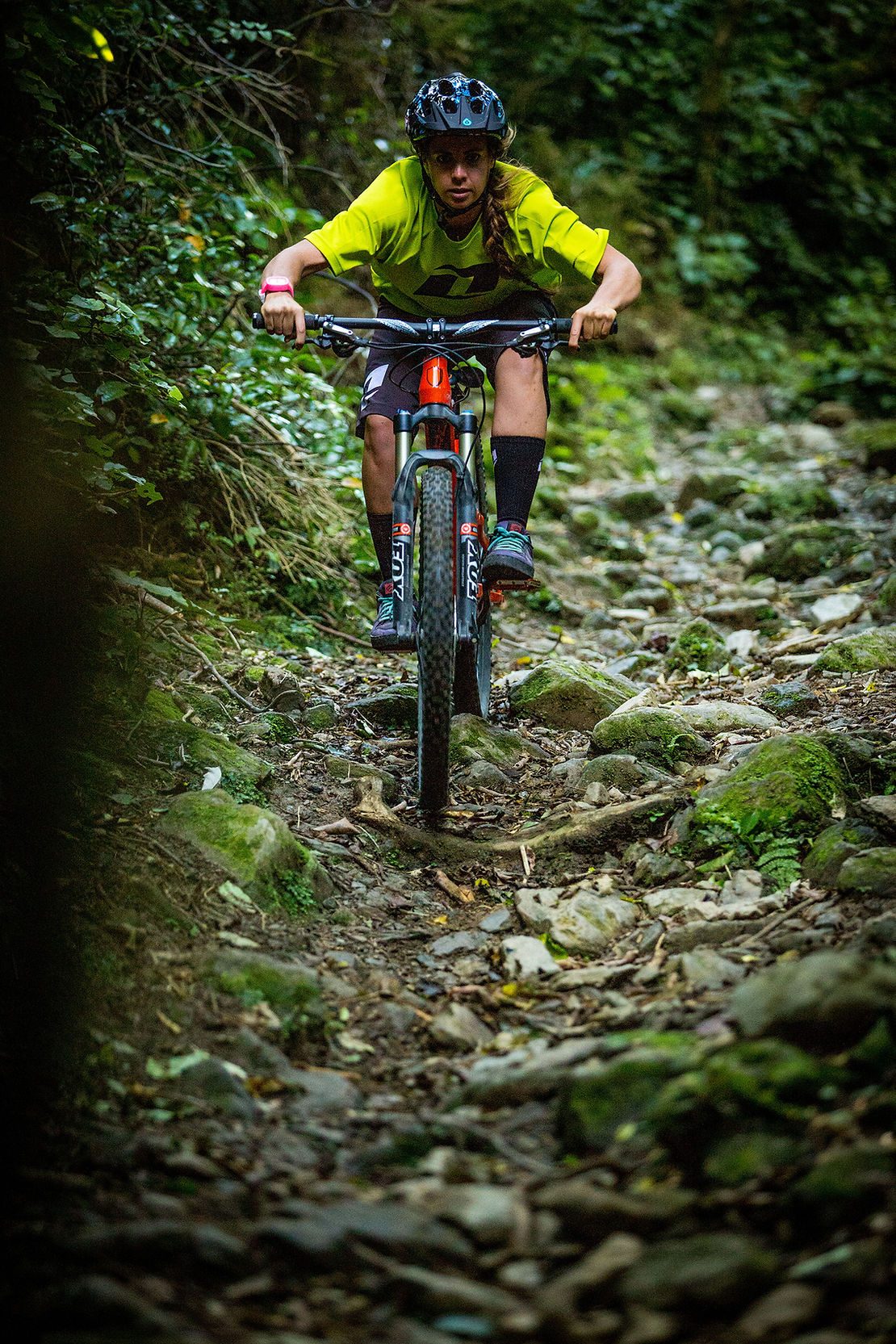
Jono and Tama admit the crew didn’t know much about trail building at that point, but there was no lack of desire to learn. Even after it became apparent that completing the trail was going to take much, much longer – and require some proper tools – the eagerness didn’t wane.
“You get to a stage where you’ve committed so much time and effort that you don’t want to stop, you just can’t,” says Tama. “So we just kept pushing forward with this cheerful optimism that it would get done. We didn’t know any trail building theory but had a good rhythm going. We’d work out where the track was heading, tear into the dense bush and vines, someone would ride the new section, and if they deemed it “almost rideable” we could move onto planning the next section.”
When something wasn’t “almost rideable”, the crew would have a few goes to see if they were just having an off day. “There was this 8 metre shoot that we ended up calling Satan’s Crack, and after a few too many tries we decided it might actually kill people, so we chose an alternate line.” In reality, completing the build took about 18 months and on Easter weekend in 1999, Deliverance was declared open.
“By the time we went ‘right, this is done’, it was was deemed “rideable”, which meant we were sick of trail building and theoretically you could ride a bike from one end to the other,” says Tama.“Two weeks later James broke his arm on ‘The Chute’, starting a grand tradition of Deliverance chewing up and spitting out hapless riders. Luckily, Don McLeod came along and put hundreds of hours towards upgrading the trail to a more accessible level.”
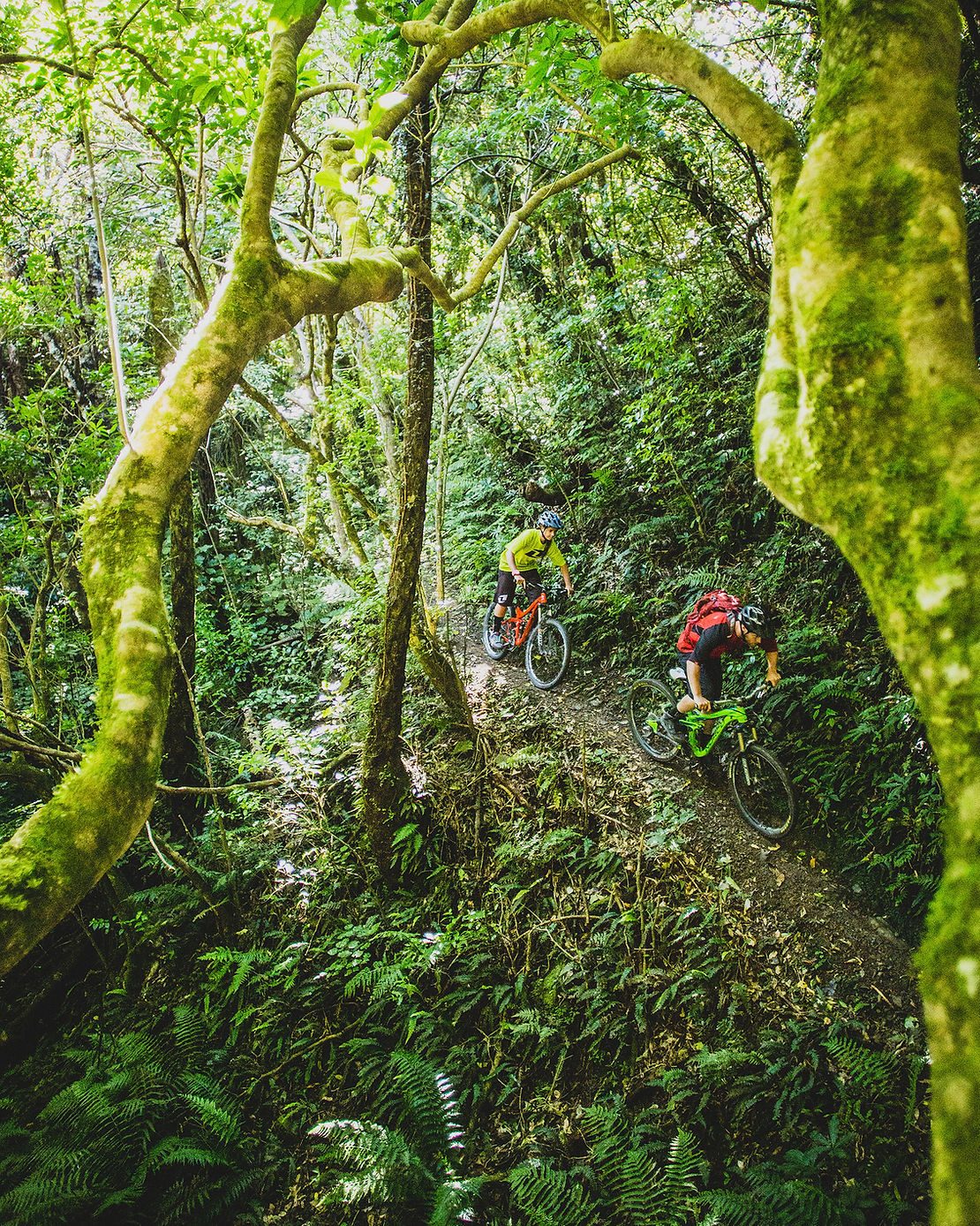
Not that it doesn’t still spit out riders, hapless or not. “It was built to be a feral trail and 20 years later, it’s still feral,” says Jono. “It’s always an achievement to get all the way down without dabbing.”
As if to prove a point, at the 20-year anniversary event in early May – which was attended by dozens of Deliverance disciples – Ricky, who helped build the trail and has ridden it hundreds of times, broke his wrist and ankle. “What can I say? It keeps you on your toes… or breaks them.”
While breaking riders wasn’t his goal, Tama, who came up from Nelson for the anniversary, says it’s great to know so many riders have honed their skills on a trail he feels such a connection with. “You can tell that it’s still loved, still ridden and still feral in places – I bought my first full suspension bike with the intent to ride it, and I hope it’s inspired others to do the same.I would highly recommend taking part in trail building – whether it’s the full shebang or just a section. It’s pretty special to, 10-20 years later, say I helped make this and thousands of people have enjoyed it.”
Words: Meagan Robertson
Images: Mike Hopkins
Story: Guilty As Charged: eBike Etiquette
One of the great things about any flavour of mountain biking, is its freedom. Outside the realms of competition, its lack of rules and regulations contribute to expanding the fun-factor of merely riding in the great outdoors. There are a few unwritten rules of the jungle, though; some obvious to anyone with a bit of common sense or riding experience; and others which are more abstract. The growing popularity of eBikes on NZ trails adds another dimension to the mix of what is considered ‘proper’ trail etiquette. Although I’d never be arrogant enough draw a line in the sand and say you must do this or that, there are factors at play with eBikes being a valid and growing part of our mountain biking culture, and these are changing some of the previous long-standing courtesies.

A significant one is labelling other riders. You know the drill; you rock up to a trail head and size up any other riders there - trying to judge their ability by the kit they’re wearing, how pro-looking their bike setups are, and that indefinable confidence some riders exude. All this helps determine the self-seeding pecking order of who should head off down the trail first. We’re still at a stage where there are plenty of self-important elitists who swear they’ll never taint their riding pedigree by being seen astride a motor-assisted mountain bike. Woe betide any E-bike rider who arrives at a downhill trailhead at the same time as one of these purists, as they would instantly be tagged as old, lazy or just a cheat for making their climbing easier. That is a mistake, though. As a literal example - I’m aware of several local hotshots who spend their time equally between their regular bikes and their motor-assisted ones. If one of these guys is at the start of your favourite Grade 5 trail it doesn’t matter which bike they’re on, they’re going to beat most riders to the end of it.
On the flip side, E-bike riders shouldn’t gauge other riders by their own standards. Sure, eBikes are supremely capable, and in the hands of a skilled rider are quite the rocketship on descents, even when not pedalling. But just because an eBike rider can ride fast, doesn’t mean their concept of ‘fast’ matches up with other riders they share the trail with. I am thinking particularly of a different couple of local riders I know, one who is an elite triathlete with great mountain bike skills, and the other who successfully races at elite level across DH, Enduro and XC disciplines. I reckon they’d give the average eBike rider a run for their money on almost any style of trail, except for an outright gravel road climb.
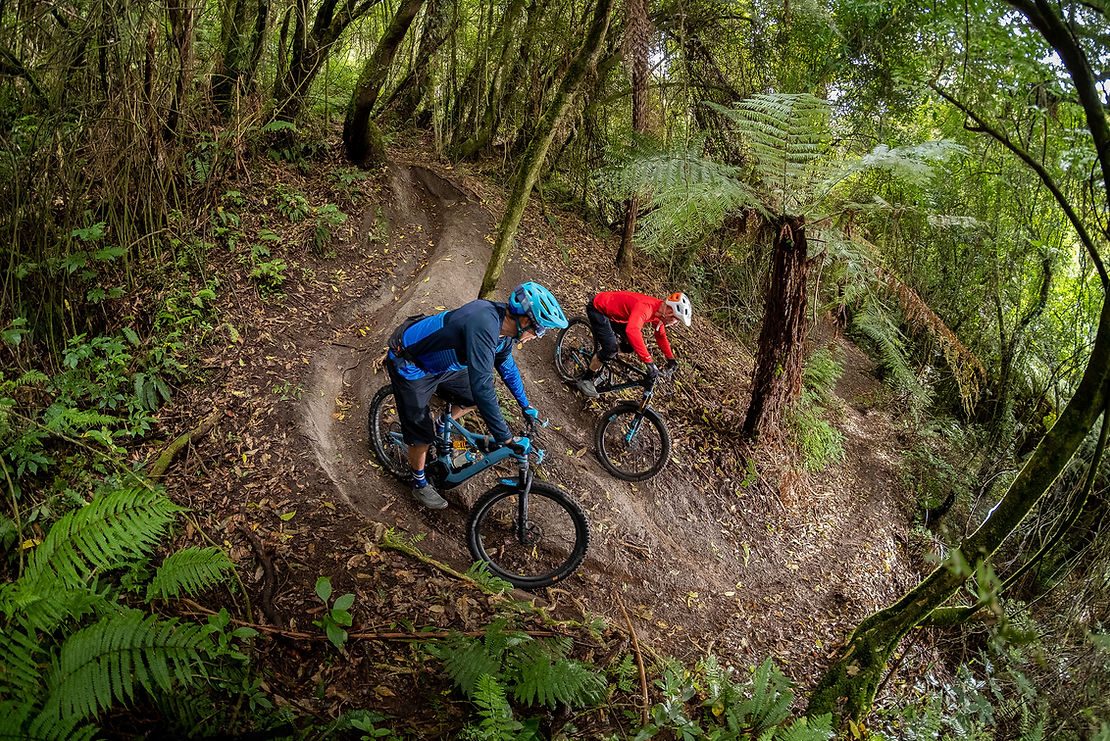
One of the points of difference when riding an E-bike is the sheer number of riders you’ll pass on climbs of all descriptions, from gravel roads to single-track. When riding an eBike, I’ve occasionally found a cheery ‘G’day’ is received with a bit of a grunt when passing riders on regular bikes. Sometimes, there will even be a mumble about cheating or some such nonsense. On particularly busy days in the forest, I’d try to minimise the effect by dialling down the motor assist or even turning it completely off. This serves to both reduce the noise of the motor whirring away to make the E-bike presence less obvious, and to pass the rider in question at a more moderate pace. There is no real requirement to do this, it’s just a small element of trying to be aware of, and courteous to, other riders.
Those aforementioned hotshots I was speaking of are at the stage of getting bells for their E-bikes. Although efficient - and even essential - for commuters, there is no denying that a bell is pretty uncool by most mountain bike standards. But… these guys are passing people so often, the bell serves a purpose to gently say, ‘hey, I’m here and I’m coming through’, without needing to engage in a more direct verbal interaction such as, ‘hey, how’s it goin’? On your right’. A gentle ‘ding ding’ sound should mitigate some of the mumbled comments about cheaters

Just riding an E-bike doesn’t automatically make the rider polite and aware of their fellow forest users though. I’ve also seen the opposite in effect: a family of recreational riders on rental E-bikes. I’m pretty sure they were recreational - their attire of Canterbury rugby jerseys, short shorts and running shoes kind of gave them away. Nothing at all wrong with that, but there was plenty wrong with their riding manner. Their newness to mountain biking was further evidenced by their disregard of other riders around them. They were having a great time, to be sure - grins plastered on their faces as they wove between the riders on regular bikes, on the climb to one of the most heavily trafficked intersections in Rotorua’s Redwood Forest trail network. With speeds two or three times faster than that of anyone else around them, the potential for bringing down a rider was high. They got away with it. This time. The moral of that story is that E-bike riders have a responsibility to be aware of other riders around them and tailor their speed accordingly. Especially as they generally have more available speed on tap at any given time.
Don’t be tempted to make jokes at the expense of E-bike riders who need to team up in order to hoist their hefty rigs onto their bike racks or the back of their utes. There may well come a time when you make use of the ability of a rider with E-bike power to tow you uphill or to a ride’s end. I’ve used a simple makeshift set-up myself, so I can attest to its efficiency. All it takes is a couple of spare innertubes linked together, one end slung over the seatpost of an E-bike, the other wrapped around the bars and then held in place under the rider’s hand on the grip. The rider being towed on their regular bike, whether it be because of a mechanical issue, injury or any other reason, will be in for an effortless trip to their destination. In my use of the technique, I was towing a photographer with his 20kg bag of kit on his regular bike up a sizeable gravel road to get to a photo location. Left to our own devices I would have taken a fraction of the time on the E-bike, and been left waiting while he battled uphill. As it was, we were able to easily roll up the hill at 20kph.

Don’t get too smug, joking that when an E-bike rider’s battery runs flat they’re stuffed. Sure, riding a heavy E-bike with no power is tougher than riding a regular bike, but it’s not wildly impossible by any means. I’ve done it myself, run an E-bike flat because I was having too much fun seeing how many technical descending trails I could fit into one day (I can’t answer the question of how many though, as I was having so much fun I lost count). The last hour of my ride that day was using the lowest of minimal power to eke out the final remnants of battery to get out of the forest, then dead flat battery riding the half hour of roads back to my house. It was a little slower on the climbs of course, but not ridiculously so. Therefore, don’t think an E-bike rider’s ride ends if the battery goes flat.
Them and Us. No matter which side of the equation you see yourself fitting into, there are perceptions about each – often completely ignorant. Ultimately, a rider’s abilities can lie anywhere on the spectrum from beginner to local legend, regardless of whether their bike that day is motor-assisted or not. One of the unspoken rules of mountain biking remains, and applies to both acoustic and E-bike riders: be nice to each other out there, we’re all mountain bikers at the end of the day.
Words & Photography: Nick Lambert
News: Get your Bike Glendhu Early Bird Season Pass!
Live down South? Planning on making some trips down this summer? Our friends down at Bike Glendhu have just pushed go on Early Bird Season Passes for the 2020/21 season!
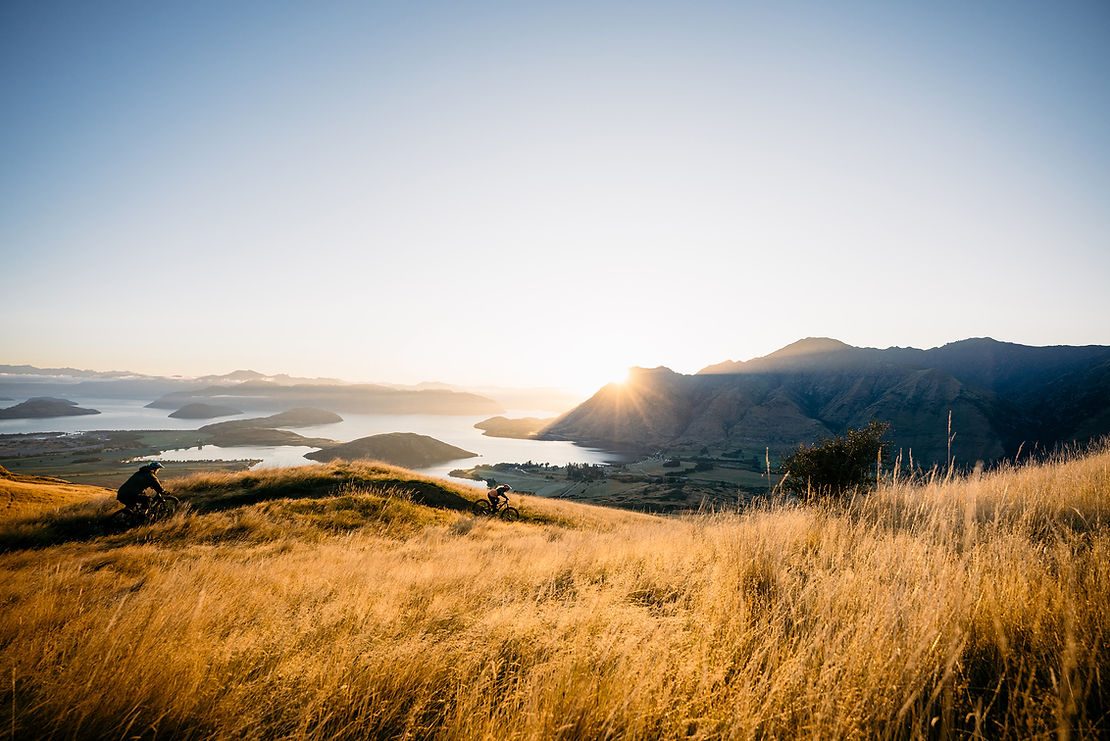
Up 'til Friday 14th August, season passes range from $249 for an adult down to $85 for a child, with under 5's going free. Discounted passes are also available for students, youth and seniors. Afterpay is available, and if Mother Nature plays ball, the park will open for the last two weekends of August, with extended days from September.
The team has been putting in the hours over the winter, cutting a new up trail from the bottom of Jairolla/Hare Time back up to Jack's Spot for quick 'n easy laps as well as a new tech blue trail from the bottom of Monsoon Hoon. A couple of other things are in the works, too. Hopefully we'll be able to share more soon...
You can pick up your early bird pass here.
Review: Shimano XC701 Review
It’s no secret that our Japanese mates in blue make some sharp gear. With all that shifting and braking bling everywhere you look, its not surprising that their footwear gets a little overlooked. But Shimano make great shoes...

The original XC7 shoe has for the last few years been a very popular model for racers and weekenders alike, but Shimano aren’t ones to rest on their laurels. I argue that it had plenty of room for improvement, and someone must have been listening. This latest model, dubbed the “XC701” (sexy naming, I know) builds on what the original had, but has done away with several things that needed to go.
From the minute you pick the shoe of the box, you can’t help but notice the material used on the upper of the shoe. The shiny plastic-like upper is now gone and replaced by a matte leather with subtle graphics that oozes class. Given time, that leather upper will shape nicely to your foot and give you a glove-like fit. Another notable change is the move to a refined double BOA closure system, doing away with the toe box strap.

Still featuring the same carbon fibre sole and Michelin rubber with room to attach toe studs, the shoe still feels and rides like the older model, which is uber-stiff, rigid and screaming ‘race!’. There is no hiding that this shoe is targeted at the serious XC mountain bike racer, but for the old school trail riders out there who like a tight-fitting, stiff shoe, then this would suit the bill well. But the shoe won’t suit all riders. The stiffness is at a level where long, aggressive descending could get uncomfortable. Over the course of an XC race and maybe even a gravel ride, then it would be perfect, but for the likes of enduro I would search for a shoe with a roomier fit and a more compliant sole.
At $299, they aren’t cheap but not are they going to break the bank and if previous models are anything to go by, these will offer years of service. So, if you’re looking for an efficient race shoe or you’re a trail rider with a preference for stiff shoes, make sure these are on your list.
Words: Cam Baker
Review: 100% Armega Goggles
100% have been manufacturing goggles for motocross since the ‘80s, and although they haven’t been present in the mountain bike market for as long, it goes without saying that they’re one of the leading eyewear manufacturers in our sport. The Armega is their new flagship goggle, taking the spot from the Racecraft+ goggles. The Armegas aren’t dissimilar to the Racecraft+ goggles, but there are some new features. The Armegas come equipped with a new quick-release lens system, meaning lenses are a little easier to change and don’t take quite as much time either. 100% have also made some changes to their sweat management system, with the goggles having drainage channels and a perforated triple-layer foam to keep the sweat away from your eyes. A forced air intake keeps air flowing through the goggles to prevent fogging, and helps to keep you a little cooler as well.

The biggest talking point with these goggles, though, is the new lens; featuring 100%’s Ultra HD and HiPER technologies. 100% have figured out how to manufacture shatterproof, impact-resistant lenses that doesn’t distort your vision whatsoever, meaning protection and clear vision. HiPER is the big thing to talk about. Humans see three main colours: red, green and blue. The closer whatever colour we’re looking at is to one of these three colours, the clearer our vision is; it’s where these colour crossover that our vision begins to distort. 100% developed HiPER to filter out these crossovers, which in turn makes for more contrast and clearer colours. Contrast helps us perceive depth so by having more of it, we can figure out how far away things are and start to plan out how to attack them just a little bit earlier.
I’ve always been into 100% goggles and found they fit my head face better than anything else, probably down to the outriggers. One thing our designer, Georgia, pointed out - that I would have completely disregarded - is the fact that the eye-port (?) is a little smaller than other goggles. This is something I wouldn’t have taken note of, but Georgia is optically challenged (I’m not) and runs glasses under her goggles. If you need glasses, this could be something for you to consider, but for those with perfect vision (or living in a state of denial), you won’t notice it. Otherwise, the goggles played nicely with my face and didn’t fog. At the risk of sounding like I’m not doing my job properly, what more is there to say? In typical Kiwi fashion, I put the whole Ultra HD HiPER lens thing down as a gimmick; too many capital letters and the word ‘ultra’. But, it actually does make a noticeable difference and at the risk of sounding like the sort of person who’d come up with gimmicky names like Ultra HD HiPER, the HiPER lenses really do make the trail pop, offering up more definition and making the transition from riding in well-lit parts to dimly-lit parts of the trail much easier. When all is said and done, I wouldn’t hesitate to spend my hard-earned dollars on these goggles and they definitely serve as a worthy replacement to my trusty Racecrafts.100% have been manufacturing goggles for motocross since the ‘80s, and although they haven’t been present in the mountain bike market for as long, it goes without saying that they’re one of the leading eyewear manufacturers in our sport. The Armega is their new flagship goggle, taking the spot from the Racecraft+ goggles. The Armegas aren’t dissimilar to the Racecraft+ goggles, but there are some new features. The Armegas come equipped with a new quick-release lens system, meaning lenses are a little easier to change and don’t take quite as much time either. 100% have also made some changes to their sweat management system, with the goggles having drainage channels and a perforated triple-layer foam to keep the sweat away from your eyes. A forced air intake keeps air flowing through the goggles to prevent fogging, and helps to keep you a little cooler as well.

The biggest talking point with these goggles, though, is the new lens; featuring 100%’s Ultra HD and HiPER technologies. 100% have figured out how to manufacture shatterproof, impact-resistant lenses that doesn’t distort your vision whatsoever, meaning protection and clear vision. HiPER is the big thing to talk about. Humans see three main colours: red, green and blue. The closer whatever colour we’re looking at is to one of these three colours, the clearer our vision is; it’s where these colour crossover that our vision begins to distort. 100% developed HiPER to filter out these crossovers, which in turn makes for more contrast and clearer colours. Contrast helps us perceive depth so by having more of it, we can figure out how far away things are and start to plan out how to attack them just a little bit earlier.
I’ve always been into 100% goggles and found they fit my head face better than anything else, probably down to the outriggers. One thing our designer, Georgia, pointed out - that I would have completely disregarded - is the fact that the eye-port (?) is a little smaller than other goggles. This is something I wouldn’t have taken note of, but Georgia is optically challenged (I’m not) and runs glasses under her goggles. If you need glasses, this could be something for you to consider, but for those with perfect vision (or living in a state of denial), you won’t notice it. Otherwise, the goggles played nicely with my face and didn’t fog. At the risk of sounding like I’m not doing my job properly, what more is there to say? In typical Kiwi fashion, I put the whole Ultra HD HiPER lens thing down as a gimmick; too many capital letters and the word ‘ultra’. But, it actually does make a noticeable difference and at the risk of sounding like the sort of person who’d come up with gimmicky names like Ultra HD HiPER, the HiPER lenses really do make the trail pop, offering up more definition and making the transition from riding in well-lit parts to dimly-lit parts of the trail much easier. When all is said and done, I wouldn’t hesitate to spend my hard-earned dollars on these goggles and they definitely serve as a worthy replacement to my trusty Racecrafts.
Words: Cam Baker
First Impressions: Giro Manifest Helmet
Giro’s new Manifest mountain bike helmet is a lightweight trail helmet featuring some interesting safety technology. Giro also claim it’s one of the best when it comes to ventilation. However, all of this comes with higher price-tag - the Manifest being Giro’s most expensive half-shell to date.

All in all, the Manifest is an impressive helmet, as it should be for the price tag. As it’s been the middle of winter, I can confirm that the air ventilation is noticeable. My noggin was super cold on an early morning start in the forest. Even on the climbs, at slower speeds, it’s noticeable - but more so at trail speeds. Onto the overall comfort. So far, the Manifest rates highly for me. The plush padding and smooth straps feel super pleasant. Then, there’s the simplicity of the magnetic Fidlock buckle - it’s quick to fasten and secure.
Keep an eye open for the full review coming soon in #99.
Words: Liam Friary
Image: Cameron Mackenzie
Arrival: The All New RockShox Zeb
We're asking more and more of our bikes, especially with the boom of enduro. Riders need to be able to pedal their bikes up hills, before pointing it back down and taking on stages that you'd expect to see at a downhill race. As bikes get more capable, we get faster and the faster we go, the more we ask of our components. RockShox has heard your fork's cries for help as you thrash it at your local, and has answered with the all-new Zeb.

The Zeb features 38mm stanchions, making them the biggest out of RockShox's range of forks, and is designed to tackle the increasing demands of enduro. The Zeb is available is three different configurations, all of which come in 160mm, 170mm, 180mm and 190mm travel:
-
Zeb Ultimate | Charger 2.1 RC2 Damper
-
Zeb Select+ | Charger 2.1 RC Damper
-
Zeb Select | Charger RC Damper
A dual-position air spring is available for eBikes, as well, meaning you can switch between 150mm and 180mm travel with the twist of a dial.
We've been lucky enough to have spent the past month or so aboard the Zeb Ultimate and so far I've been STOKED on how well the Zeb performs. Before I received the fork, I had locked in on how it'd simply feel more precise when the going gets rough, without stopping to think about how the stiffer chassis also means less "sticktion" through the travel, meaning the fork doesn't only feel smoother, but also more supportive than the Pike Ultimate fork I was riding beforehand, and I think this is something that's worth pointing out, especially for smaller riders who may think that they won't benefit from the precision of a stiffer fork. It's kinda lame to quote from the press release, but Sam Hill noted he felt an immediate difference in rocky, gnarlier straights and it's definitely true - you immediately notice the extra support from the 38mm stanchions.
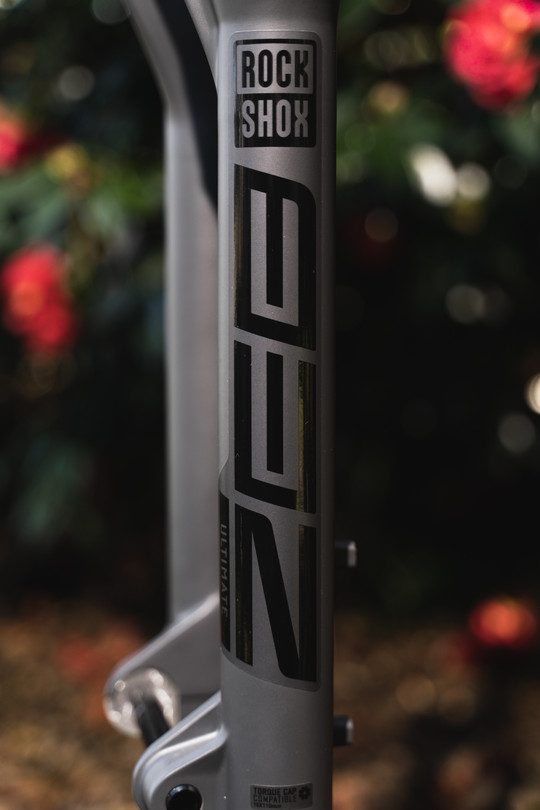




As much as I'd love to tell you all about the Zeb now, our next issue is due to drop real soon and will have a more comprehensive feature on the Zeb, so keep an eye out on our social media and grab a copy once it's out to read all about Zeb!
Words and Images: Cam Baker

